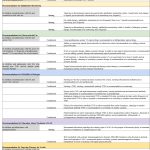Chronic Arthritis
Peter A. Nigrovic, MD, director of the Center for Adults with Pediatric Rheumatic Illness at Brigham and Women’s Hospital, Boston, ended the session with a presentation on the use of genetics for identifying subgroups within arthritis. He presented evidence that arthritis transcends the pediatric/adult boundary such that the arbitrary cutoff of age 16—the cornerstone of current classification between JIA and adult arthritis—obscures disease biology.2
Dr. Nigrovic outlined an alternative method employing genetic data to identify groups within inflammatory arthritis, beginning with the human leukocyte antigen (HLA) locus on chromosome 6 and then proceeding to the many other loci implicated in arthritis by genome-wide association studies (GWAS). Specifically, he described SNP-seq, a new method published in Nature Genetics for the experimental identification of single nucleotide polymorphisms (SNPs) and other variants that function not by altering protein sequence, but instead by changing gene expression.3
Reflecting on the long road to understanding the mechanistic implications of GWAS data, Dr. Nigrovic noted, “figuring this [method] out is the next Holy Grail.”
Lara C. Pullen, PhD, is a medical writer based in the Chicago area.
References
- Hinks A, Marion MC, Cobb J, et al. Brief report: The genetic profile of rheumatoid factor-positive polyarticular juvenile idiopathic arthritis resembles that of adult rheumatoid arthritis. Arthritis Rheumatol. 2018 Jun;70(6):957–962.
- Beukelman T, Nigrovic PA. Juvenile idiopathic arthritis: An idea whose time has gone? J Rheumatol. 2019 Feb;46(2):124–126.
- Li G, Martinez-Bonet M, Wu D, et al. High-throughput identification of noncoding functional SNPs via type IIS enzyme restriction. Nat Genet. 2018 Aug;50(8):1180–1188.

